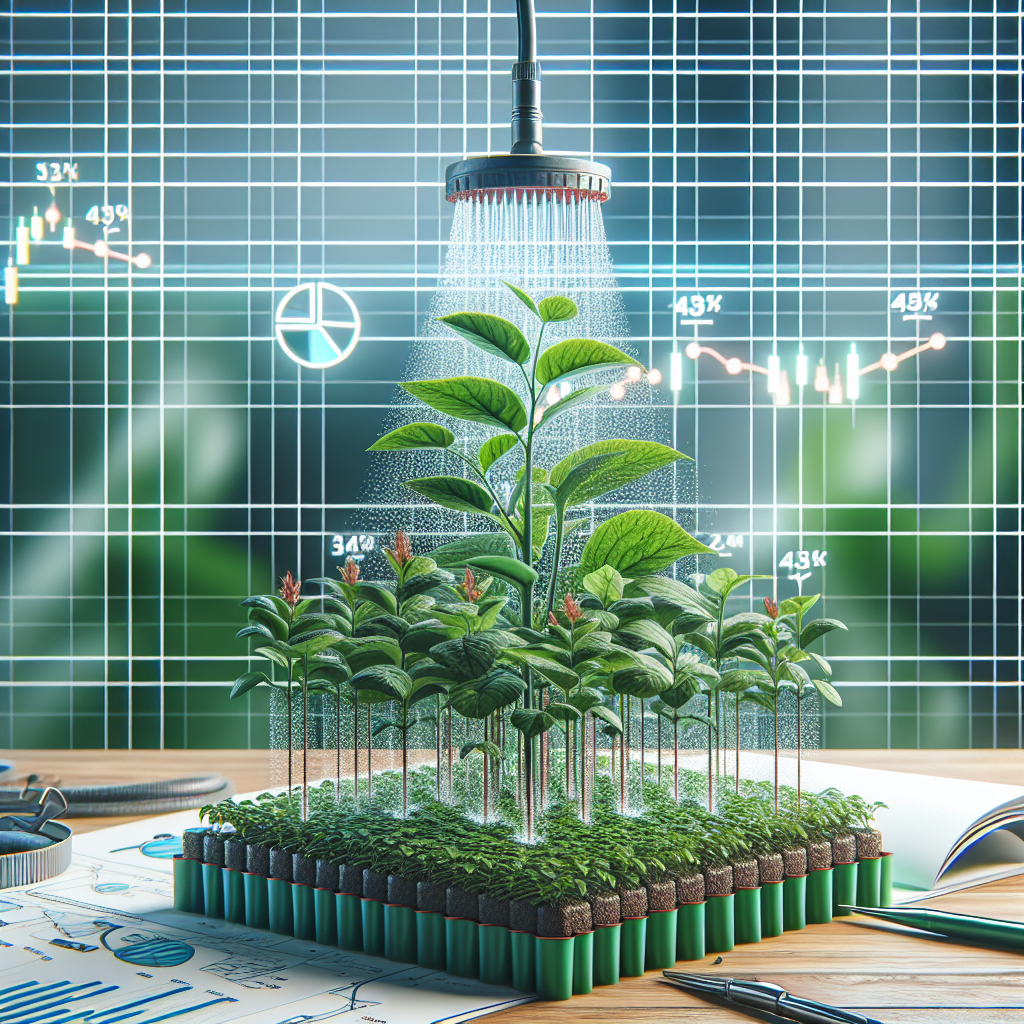Optimizing Growth with Regular Watering Using a Slow Drip System
Regular watering is essential for the health and growth of plants. Without a consistent water supply, plants can become stressed, wilt, and ultimately die. To ensure optimal growth, it is crucial to provide plants with the right amount of water at the right time. One way to achieve this is by using a slow drip system.
A slow drip system is a method of watering plants that delivers water directly to the root zone at a slow and steady rate. This allows for deep penetration into the soil, promoting healthier root development and more efficient water usage. By providing a constant supply of moisture to the roots, plants are better able to absorb nutrients and grow vigorously.
One of the key benefits of using a slow drip system is that it helps to prevent water wastage. Unlike traditional watering methods such as sprinklers or hoses, which can result in overwatering and runoff, a slow drip system delivers water directly to where it is needed most. This not only conserves water but also reduces the risk of disease and pest infestations caused by excess moisture.
Another advantage of using a slow drip system is that it promotes more uniform growth throughout the plant. By ensuring that each plant receives an equal amount of water, nutrients are distributed evenly, leading to healthier and more consistent growth. This can result in higher yields for gardeners growing fruits and vegetables.
In addition to promoting optimal growth, a slow drip system also helps to reduce weed growth. Traditional watering methods can inadvertently water weeds along with desired plants, leading to an increase in weed populations. By targeting only the root zones of plants, a slow drip system minimizes weed competition and allows for better control over unwanted vegetation.
When setting up a slow drip system, there are several factors to consider in order to optimize plant growth:
1. Plant spacing: Ensure that emitters are placed strategically around each plant to deliver water directly to the root zone. Adjust spacing according to plant size and water requirements.
2. Watering schedule: Determine how often plants need to be watered based on their individual needs and environmental conditions. Monitor soil moisture levels regularly and adjust watering frequency as needed.
3. Soil type: Consider the type of soil in your garden when setting up a slow drip system. Sandy soils drain quickly and may require more frequent watering, while clay soils retain moisture longer but may need less frequent watering.
4. Water pressure: Adjust the flow rate of your slow drip system based on plant requirements and soil conditions. Too much pressure can lead to runoff, while too little may not provide sufficient moisture.
By incorporating these factors into your gardening routine, you can optimize plant growth with regular watering using a slow drip system. Whether you are growing vegetables in raised beds or tending flower beds in your backyard, implementing a slow drip irrigation system can help you achieve healthier plants with less effort.
In conclusion, optimizing growth with regular watering using a slow drip system is an effective way to promote healthy plant development while conserving water resources. By delivering water directly to the root zone at a controlled rate, plants receive consistent moisture levels essential for optimal growth. With careful planning and maintenance, gardeners can enjoy bountiful harvests and beautiful blooms while minimizing water waste and reducing weed competition – making it an essential tool for any gardener looking to maximize their gardening success!














